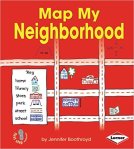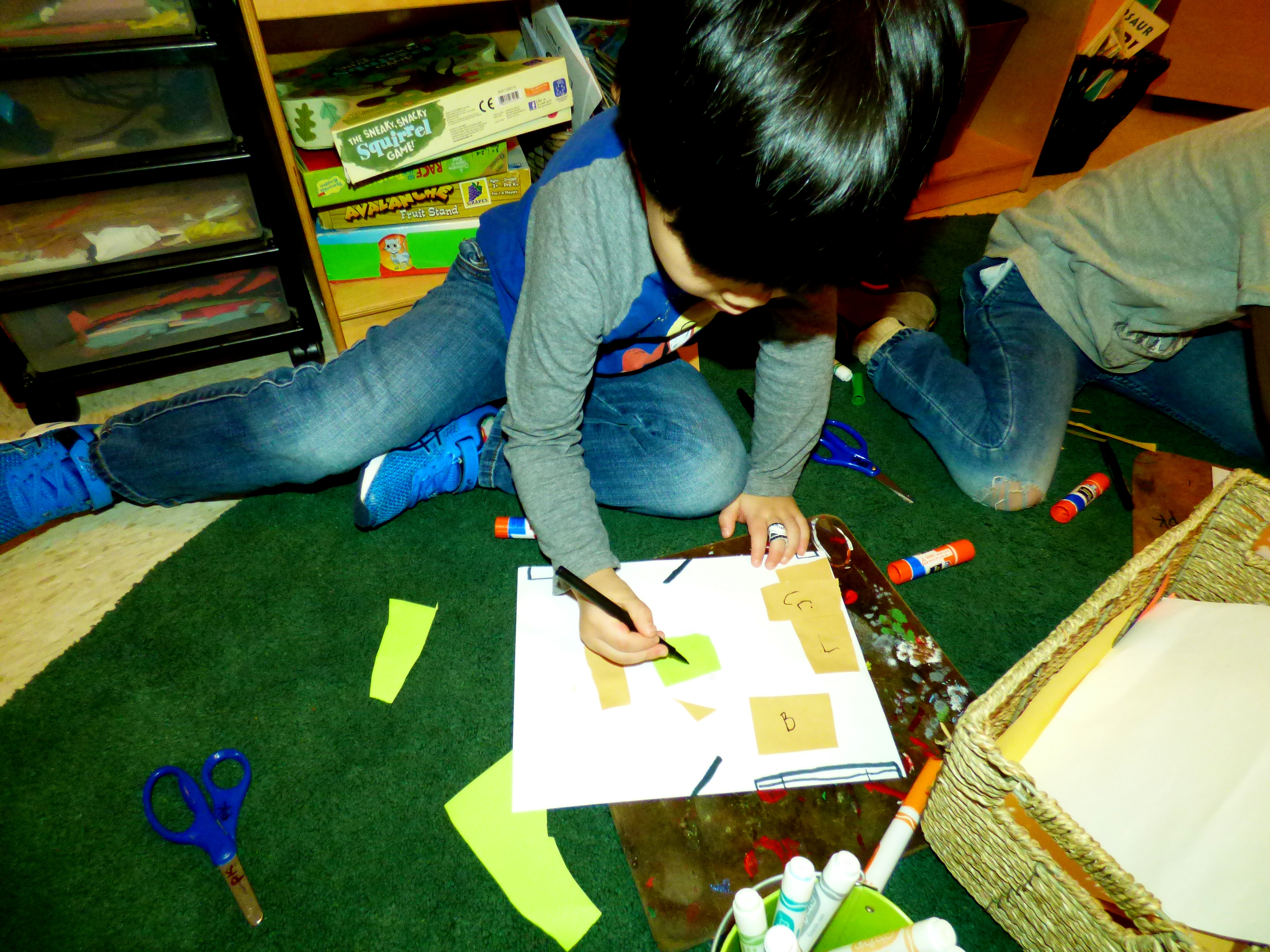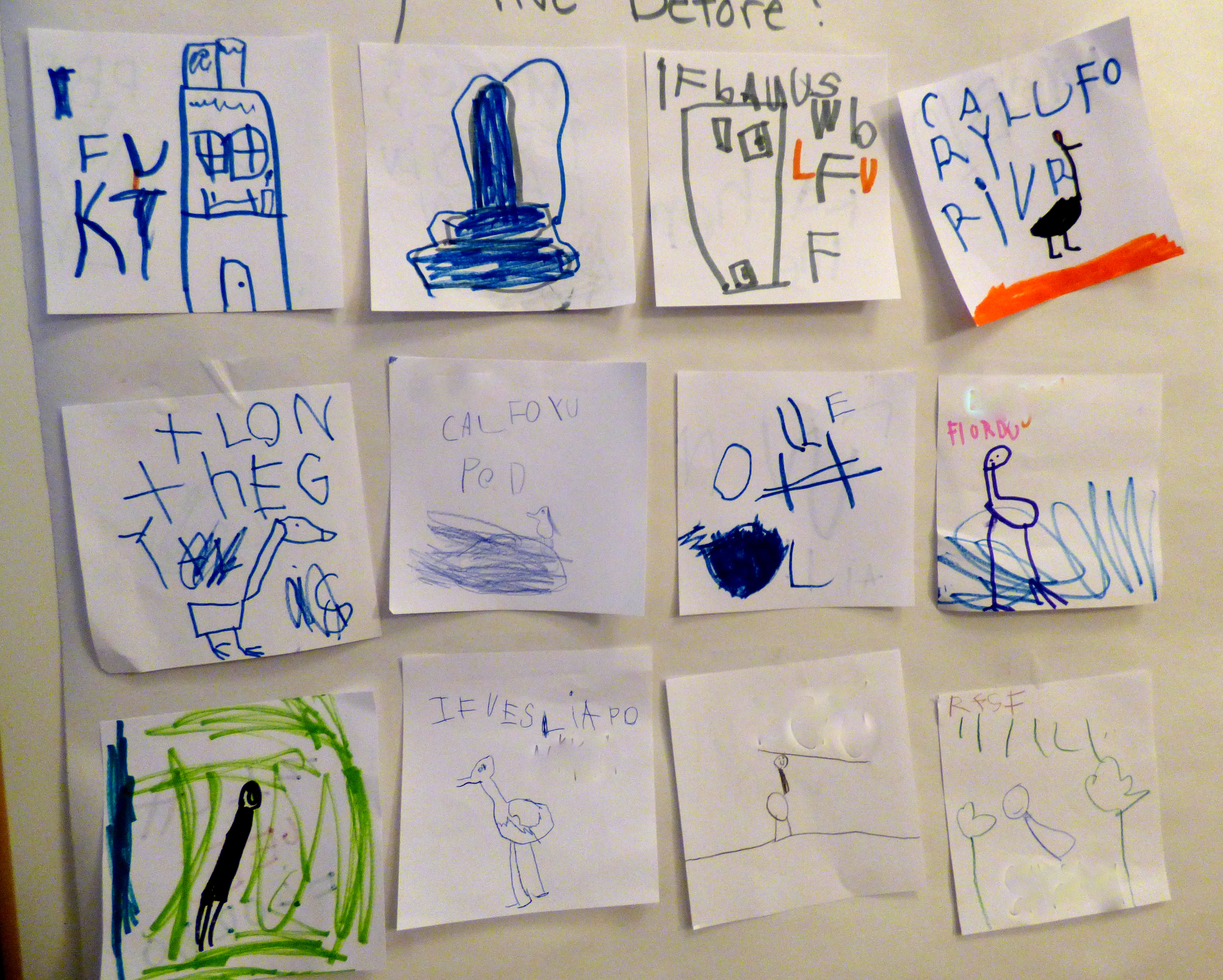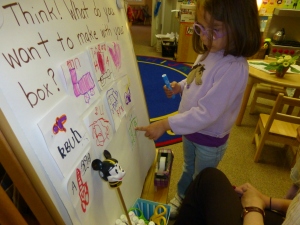This conversation began at lunch yesterday. I’m not quite sure how the topic began and it quickly spread across all tables in our classroom cafe. The children were comparing notes on the proof they claim to have regarding the truth of the Grinch’s existence. Some said he had climbed in their window and left a tuft of hair behind. Others insisted that he had taken their very special bunny. After many offers of supporting arguments, I decided we should probably get to the bottom of this quandary. I asked the children how we could find out for sure if the Grinch was real. They enthusiastically agreed that a trap was the best way to get proof.

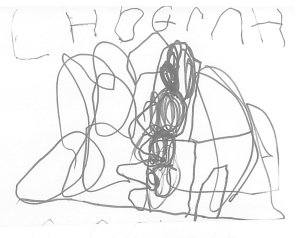
G: We put lots of clips on him and take the clips on the door and we keep the clips open with scissors. When he comes in the door, the clips close.
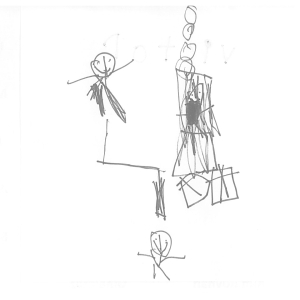
V: The Grinch can walk along and we make a button. When he is coming, we push the button and the cage comes down. Then Victory!

R: I want to put everywhere a net, so he can’t get anywhere and we can trap him in it. We have to put them everywhere. We’ve got to make a sign to say, “No Grinches Allowed!”

W: The Grinch will come into our school. There’s a button that says, “Yummy Tasty Garbage for the Grinch to Eat,” but it tricks the Grinch. It’s really a net that traps the Grinch.

E: When he steps on the pillow, the trap will fall down and pinch his hair, then he’ll walk in and be stuck. I’ll put some garbage in the cage and when he gets it, the door will slam.
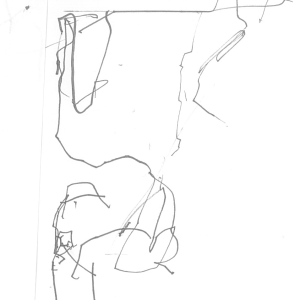
X: I made a net. When he eats a hot dog, it will go down on his head. …[G’s] clips will get his feet.

B: We can put traps all over the school and then take them out for people.

K: We need to see if he’s real. If he’s laying in a rope, he’s real. This is the escalator. He’s pulling a rope. It’s capturing him on the rope.
It seems the children have very definite ideas about how traps work. They are also pretty confident that the “Grinch” is a bad-guy no matter whether they believe he exists or not. I’m curious to see how they might build these traps.

